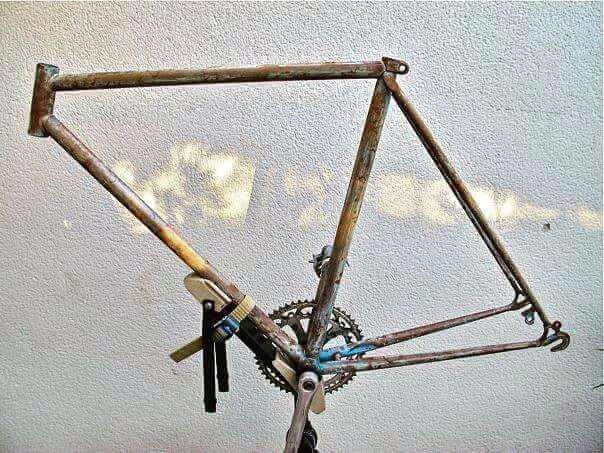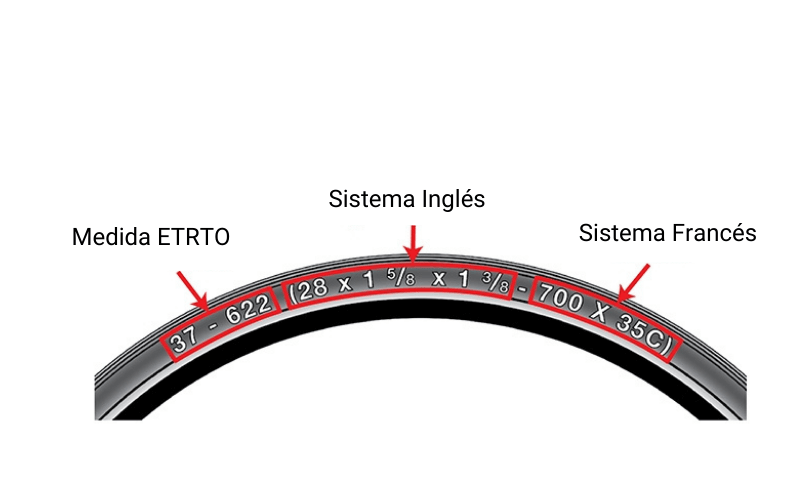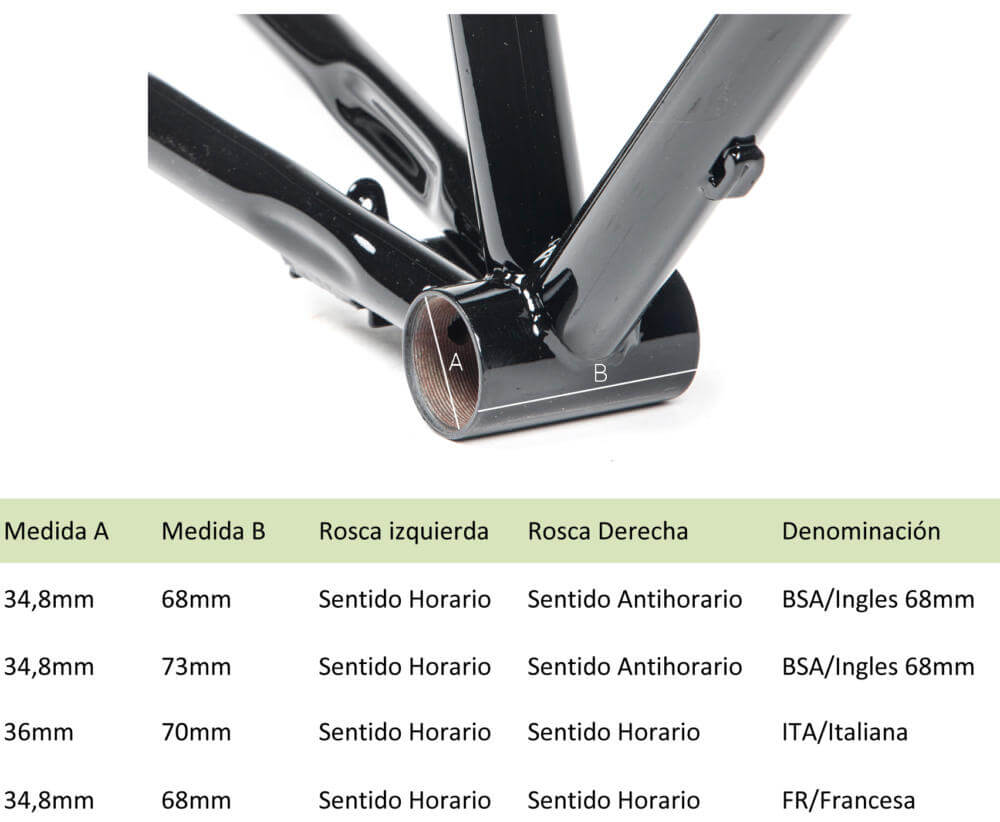
The art of restoring an antique bicycle is a task that can take time, patience and skill. Restoring an antique bicycle is a way of preserving the bicycle's history and design, as well as reviving an object of sentimental or historical value.
The restoration process can vary depending on the condition of the bicycle and the goals of the restorer. In general, restoration involves disassembling the bike completely, cleaning the parts and replacing damaged or worn parts. It may also involve painting and polishing the bike, as well as installing new or vintage parts.
One of the biggest challenges in restoring vintage bikes is finding replacement parts that are compatible with the bike in question. At biciclásica.com we work with new components equivalent to those used in the past. Often the original parts are no longer manufactured and can be difficult to find.
Once all the necessary parts have been gathered, the restoration process can begin. The restorer must be precise and careful when reassembling the bicycle to ensure that everything works properly.
In summary, restoring an antique bicycle is a challenging but rewarding task that requires skill, patience and dedication. Restoring vintage bicycles is a way of preserving the history and heritage of bicycles, and can provide a unique experience for those who do it.

How to know which tyre I need
A bicycle's tyres are one of its most important parts. They are responsible for keeping you glued to the ground and providing comfort while you're on it. If you want to restore your classic bike or simply need to change them, it is logical to have doubts about what equivalences and sizes you should buy. When purchasing a tyre for a classic bike, there are a number of important factors you need to consider.
The first thing that needs to be clarified is that different systems can be used to measure tyres: ETRTO (European Tyre and Rim Technical Organization), English system (in inches) and French system. On our website we offer you a complete table of bicycle tyre equivalence so that you don't have any doubts.
In our case, we will always use the ETRTO system, as it is easier to understand. The diameter and width (balloon) measurements are separate. Use millimetres and only measure these two parameters.
It is essential that before choosing the tyres of your bike you must take into consideration a number of factors. Firstly, so that they are suitable for your tyres and, secondly, so that you feel comfortable using them. Below you will find out which are the most important.
How you will use your bike
Different types of tyres for your classic bike
Depending on how you use your classic bike, you will need different tyres. Classic bike tyres are designed for an urban environment, although they have resistance for other types of roads. Here are the possible uses for your bike and the type of tyre you need for each:
- Urban use: This is the most favourable and where tyres suffer the least. The pavement ensures a comfortable ride and it is difficult to get a puncture. If you are going to use your bike exclusively for urban use, we recommend a tyre that is between 23 and 25 mm. The narrower it is, the less difficult it will be to pedal, as the friction is also lower.
- Mixed use: In this case, you may be riding in a paved city or on a dirt road. You will need a tyre with a 32 to 40 mm balloon and low friction. This type of tyre is also recommended for bicycles that have to carry loads, such as a child seat.
- Sporadic use on unpaved terrain: Although you will be riding mainly on paved terrain, it is necessary to take into account that you will occasionally use it on dirt roads. For this, it is recommended to use a between 28 and 32 mm. It should offer little friction, but enough to avoid punctures on less favourable terrain.
-
Rim width
The width of the rim is the distance between the two walls of the rim. It is important to note that this measurement must never be greater than the width of the wheel, as this will make it impossible to mount the tyre. In other words, if the rim is 28 mm wide, the tyre must be the same or wider, never narrower.
Tyre tread
This tread pattern also varies depending on your needs and the environment you will be riding in:
- No tread: For urban and city use where the pavement is rarely wet from rain. In dry conditions, this tread pattern offers very good grip and minimal friction.
- With light tread: Can also be used in the city, but provides better grip than the previous one on wet or dusty roads. Even on unpaved terrain its grip is quite decent.
- With tread: Without any doubt, it is the most versatile. With this feature on your bike, you will be able to use it on any type of terrain: paved, dirt, wet, dry, etc. The grip it offers is sensational and adapts to all conditions that may occur in your environment.
Wheel pitch
This is the distance between the rear chainstays of the bicycle. It is very similar to the width of the rim. Under no circumstances may the tyre be wider than the wheel arch. If this value is 30 mm on your bike, you cannot fit a tyre of the same size or more, it must be below this value. Otherwise, the wheel will be braked.
On the market you can find different types of tyres for your bike. The three most important ones are these:
- Tubular tyres: They have an inner tube inside a tube. They are glued to the wheel and have the great advantage that, even if they get a puncture, they do not separate from the wheel, so it is possible to continue using them without stopping completely.
- Clincher tyres: These are the most common, they are hollow inside and that is where the inner tube is placed. Contrary to the previous ones, it is quite easy to fix punctures and they are attached to the rim by the sides of the tyre. There are two types:
- Foldable: They are made with a Kevlar rim and are lighter, making them easier to handle and transport.
- Rigid: They cannot be folded and are heavier than the previous ones. This is because they have a ring of steel wire inside.
- Tubelessthey do not have an inner tube. One of their great advantages is that there is very little chance of getting a puncture with them. They also allow you to adjust their pressure, so you can lower it on wet or winding roads.
The tyre for a classic bike is something you should choose with a number of factors in mind. If you don't, you're likely to choose the wrong tyre and have problems riding it. Check out the different types of tyres in the biciclásica online shop and choose the one that best suits the characteristics of your bike.

How to find out which bottom bracket is on my bike
A bottom bracket is a metal rod (axle) with two bearings that are contained within the bottom bracket shell. At each end of the axle the corresponding crank is attached, allowing the crank to rotate with low friction.
History.
The principle of the bottom bracket is the same as when the first pedal bicycle was invented. For a bicycle to work it was essential to pedal, and the only solution to do so, avoiding friction, was to install bearings between the axle, which joined the cranks, and the bicycle frame. The part of the frame where these bearings are housed is called the bottom bracket shell. Since its creation, the only variations that the axle has had are the way of anchoring the cranks to the axle and the way of anchoring the axle to the frame. For these two reasons the bottom bracket world is quite complicated, and if tomorrow we want to replace or repair it, we must know what to look for.
Bottom brackets according to the bottom bracket shell:
The bottom bracket shell is cylindrical in shape, and there are two measurements to take into account: A (inner diameter) and B (cylinder length). Depending on these measurements we will have one type of bottom bracket or another.
Although there are many types of bottom bracket, we are going to focus on threaded bottom brackets, which is the most widespread type, and the one used in almost all classic bikes.
We leave you a link of our Blog where it is explained in detail which one you should choose:
https://www.biciclasica.com/blog/2017/06/que-eje-de-pedalier-debo-escoger/

How to know which cranks to buy
Restoring a vintage bicycle requires knowing which components are the most suitable and compatible, but it is also important to take into account the aspects of performance and aesthetics to achieve the best results, in this Post we recommend 5 models of Bicycle Cranks ideal for any Urban Bicycle.
Key cranks, also known as wedge cranks, if you are looking to keep the original components of your old bike, it is very possible that if the bike is more than 40 years old it has a system of key cranks, they are fixed to the bottom bracket axle by a wedge system that works under pressure, they are usually cranks built in steel and it is very difficult to find them, available in Biciclasica.com from 9,70 Eur
Steel and aluminium cranks, The combination of both elements can allow us to have the firmness and durability of steel cranks with the chainring in that material to improve the wear of the chainring that can have the aluminium, and with the cranks or arms in this case in aluminium which reduces its weight, they are without doubt a very balanced solution that also have a very tight cost, so if you need a cheap cranks for bicycle with good performance, these cranks are the best solution, (in this case with square axle).
Aluminium cranks, if weight is an important condition, you can opt for a bicycle crank that has both elements made of aluminium, they may be less resistant or durable, but that also depends on the quality of the aluminium itself, and they will certainly allow you to enjoy a lighter bike. This model from Stronglight is certainly a very stylish and high performance choice. from 34,90 Eur
Aluminium crankset with double chainring, if you want to give more versatility to your urban bike or if you need a wider development to be able to use your bike in environments with big slopes, the crankset with double chainring (or triple) will allow you to multiply the speeds of your bike. This model of crankset with 50 and 34 teeth from 39 Eur is very recommendable.
Fixie cranks If what you want is to equip your bike with a Fixie style crankset, you need a light but at the same time resistant crankset, as the crankset is punished in a special way, in that sense we recommend using cranks from prestigious brands such as Sturmey Archer cranks, or the cranks from the Japanese manufacturer Sugino, this model of crank that we show you Sugino RD2 Track Silver 48T 165mm is available at Biciclasica.com from 99 Eur



